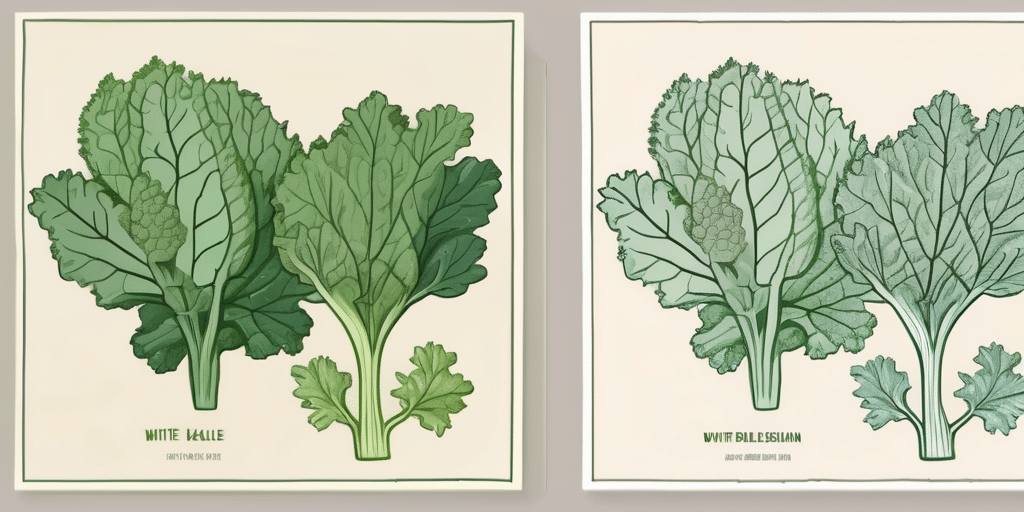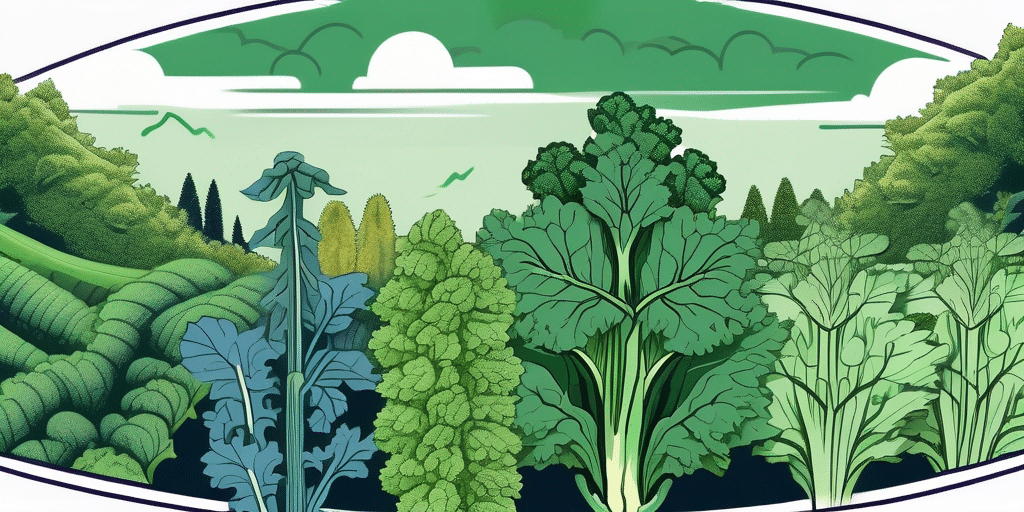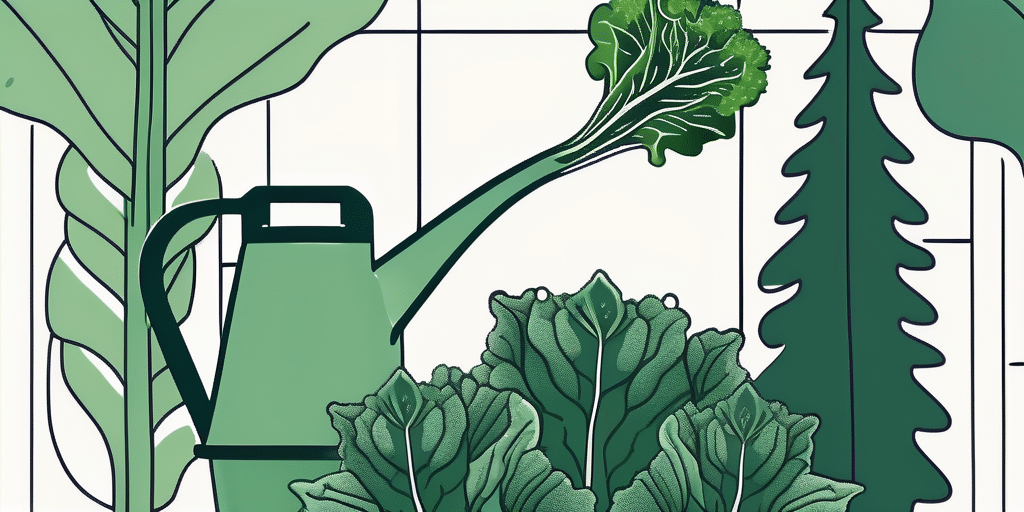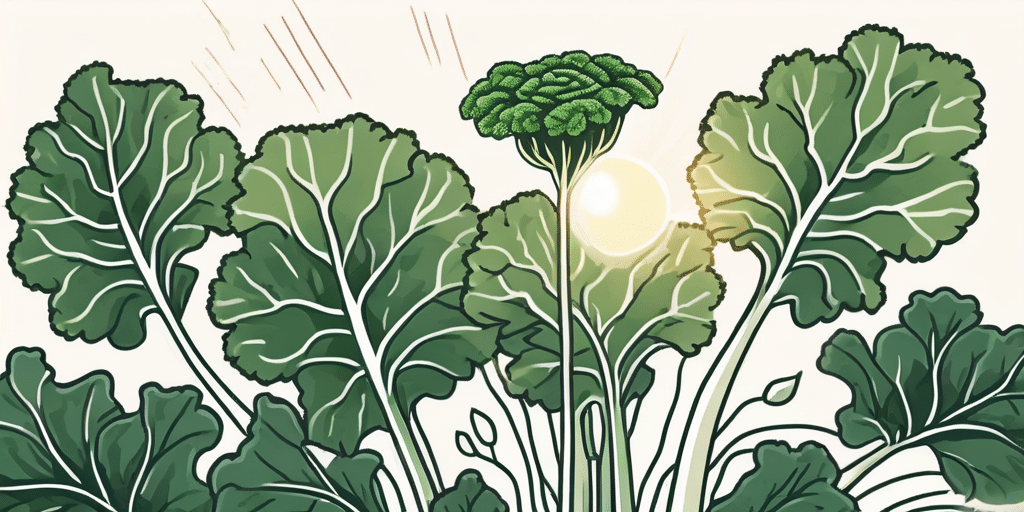Kale is a versatile and nutritious leafy green that can thrive in Tennessee’s climate. Whether you’re a seasoned gardener or a beginner, this article will provide you with all the information you need to successfully grow kale in Tennessee. From the best varieties to plant to the ideal planting and harvesting times, we’ve got you covered.
Best Kale Varieties for Tennessee
Before diving into the planting process, it’s essential to choose the right kale varieties for Tennessee’s climate. The following varieties are known to do well in this region:
- Curly kale (Brassica oleracea var. sabellica): This popular variety produces ruffled leaves that are great for salads and soups.
- Lacinato kale (Brassica oleracea var. acephala): Also known as dinosaur kale, it has dark, long leaves that are perfect for sautéing.
- Red Russian kale (Brassica oleracea var. acephala): With its purple stems and frilly leaves, this variety adds a splash of color to any dish.
When considering kale varieties for your Tennessee garden, it’s important to note that kale is a cool-season crop that thrives in the state’s moderate climate. Curly kale, with its frilly leaves and robust flavor, is a favorite among Tennessee gardeners for its versatility in various culinary creations. Whether added to smoothies for a nutritional boost or sautéed with garlic and olive oil for a simple side dish, curly kale is a staple in many home gardens.
Lacinato kale, also known as Tuscan kale, offers a unique texture and flavor profile compared to other kale varieties. Its dark green, bumpy leaves hold up well in cooking, making it an excellent choice for hearty soups and stews during Tennessee’s chilly winters. Additionally, the Red Russian kale variety not only provides a visual pop in garden beds but also offers a mild, slightly sweet taste that pairs well with tangy dressings in fresh salads.
Climate & Hardiness Zones in Tennessee
Tennessee’s climate is diverse and falls into several hardiness zones. Most areas in the state range from zone 6b to zone 8a. Before planting kale, it’s crucial to determine your specific hardiness zone to ensure optimal growing conditions.
Zone 6b in Tennessee covers the higher elevations of the Appalachian Mountains in the eastern part of the state. These areas experience colder temperatures during the winter months, making it important for gardeners to select cold-hardy plants like kale that can withstand frost. On the other hand, zone 8a, found in the western part of Tennessee, has milder winters and longer growing seasons, allowing for a wider variety of crops to be cultivated.
Understanding the nuances of Tennessee’s climate and hardiness zones is essential for successful gardening. Factors such as elevation, proximity to bodies of water, and urban heat islands can all influence local growing conditions. By researching and selecting plants that are well-suited to your specific hardiness zone, you can increase the likelihood of a thriving garden that yields bountiful harvests year after year.
When to Plant Kale in Tennessee
Timing is important when it comes to planting kale. Ideally, you should sow kale seeds in early spring, as soon as the soil is workable and temperatures consistently reach around 50°F (10°C). This usually falls between mid-March and mid-April in most parts of Tennessee. If you’re using transplants, they can be set in the ground around 2-4 weeks before the last expected frost.
However, kale is a cold-hardy plant that can tolerate light frost, making it possible to start planting as early as late winter in some parts of the state. Keep in mind that young kale plants are more vulnerable to extreme cold, so providing them with a protective covering, such as a row cover or cloche, can help them withstand any unseasonably chilly nights.
It’s worth noting that kale is a nutrient-dense leafy green that thrives in the cool temperatures of early spring and fall. In Tennessee, the climate varies across different regions of the state, so it’s essential to consider your specific location when determining the best time to plant kale. For gardeners in the higher elevations of the Appalachian region, where temperatures can be cooler, starting kale indoors under grow lights a few weeks before the last frost date can give the plants a head start.
Additionally, kale is a versatile vegetable that can be grown in containers or raised beds, making it a great option for urban gardeners or those with limited space. When planting kale, ensure the soil is well-draining and rich in organic matter to support the plant’s growth. Consider incorporating compost or well-rotted manure into the soil before planting to provide essential nutrients for healthy kale development.
When to Harvest or Pick Kale in Tennessee
Knowing when to harvest your kale is crucial for enjoying its vibrant flavors and maximizing nutritional benefits. Kale can be harvested throughout the growing season, but the flavor tends to be the best during cooler months. Here are some guidelines to help you determine the ideal time to pick your kale:
- Harvest young leaves: For tender, mild-tasting kale, pick the outer leaves when they reach about 8-10 inches in length. This allows the inner leaves to continue growing and ensures a constant supply of fresh kale.
- Consider frosty temperatures: Kale can tolerate light frosts and even becomes sweeter as the temperatures drop. However, if a hard freeze is predicted, harvest the entire plant to avoid damage.
- Don’t forget the bottom leaves: As your kale matures, it’s essential to remove any yellowing or damaged leaves regularly. This helps redirect energy to new growth and maintains the plant’s overall health.
Frequently Asked Questions
Q: Can kale be grown in containers?
A: Absolutely! Kale can be successfully grown in containers, making it a great option for those with limited garden space. Use a container that is at least 12 inches deep and provide well-draining soil enriched with organic matter. Keep in mind that kale plants require regular watering, especially in containers, as they can dry out more quickly than in-ground plants.
Q: How do I prevent pests from attacking my kale?
A: Pests, such as aphids, cabbage worms, and flea beetles, can pose a threat to kale plants. To prevent infestations, try the following methods:
- Plant companion plants: Interplant kale with companion plants that repel pests, such as marigolds, dill, or chamomile.
- Use floating row covers: Covering your kale plants with row covers can create a physical barrier, preventing pests from reaching them.
- Encourage beneficial insects: Attracting beneficial insects, such as ladybugs or lacewings, can help control pest populations naturally. Planting flowers that appeal to these insects, like yarrow or daisies, can be beneficial.
- Inspect regularly: Regularly inspect your kale plants for signs of pest damage. If you spot any, pick off or squash the pests by hand or use an organic insecticidal soap.
Q: Can kale be grown year-round in Tennessee?
A: While kale thrives in cool weather, it can be challenging to grow during the hot summer months in Tennessee. High temperatures and extended periods of heat can cause kale to bolt (go to seed) and become bitter. However, by practicing succession planting and providing shade during the hottest parts of the day, you may be able to extend kale growing into the summer months.
Now that you have all the essential information, it’s time to get your hands dirty and grow kale in Tennessee. With the right varieties, proper planting timing, and a little TLC, you’ll be enjoying fresh and nutritious kale from your own garden in no time!
Join the How to Grow Everything Community
Ready to take your Tennessee kale-growing journey to the next level? Subscribe for free to How to Grow Everything and learn how to build the garden of your dreams! Receive personalized gardening advice tailored to your specific location, grow zone, and experience level. Enjoy the best gardening tips, special offers, and deals delivered straight to your inbox—100% free, from our family to yours. Don’t miss out on our extensive library of free growing and gardening articles designed just for you. Start transforming your garden today!






